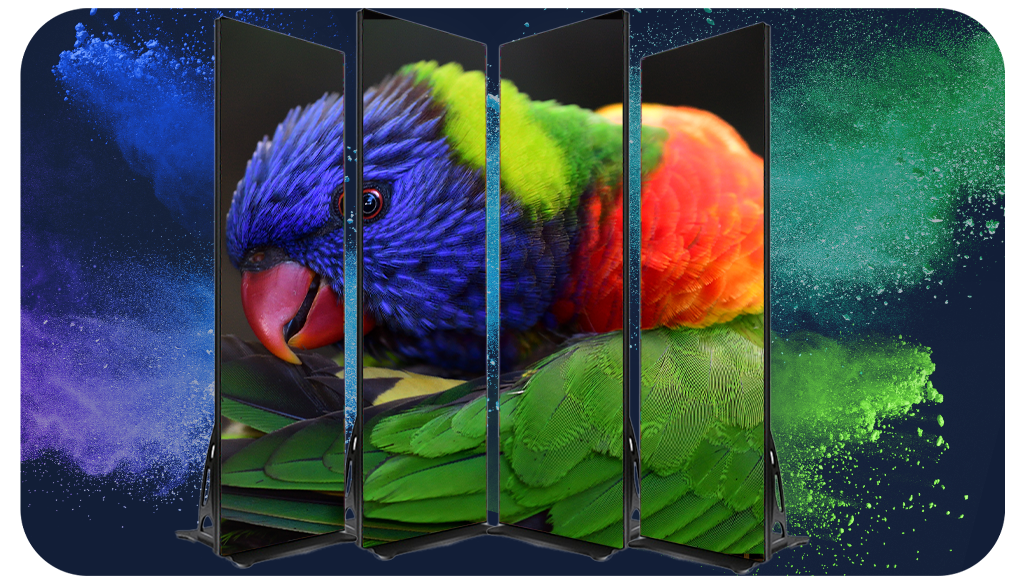Digital signage is now the go-to method of visual communication for businesses and public sector organisations alike. It is an ideal way to convey information or to display eye-catching advertising messages.
One of many advantages that digital signage has over traditional static signage is that multiple screens can be controlled from a single content management system. This gives you the ability to use LED screens in a more dynamic and unified manner for greater impact. Here’s a closer look at the benefits of multi-screen digital signage.
Greater brand visibility
In commercial settings such as retail stores, gyms and hotels, a strong and consistent brand identity is key to creating a cohesive brand that encourages customer loyalty, recognition, and trust. By using multiple screens with uniform logos, colour schemes and messaging, businesses can ensure that their presence is always at the forefront of customer experience.
Real-time insights and updates
There is often the need to update content to reflect dynamic price changes or alterations to timetabled events. Multi-screen signage management means that any changes can be synchronised across all locations to avoid confusion and create a consistent message.
Beyond this, there are often monitoring and analytic tools that can be used to measure audience engagement and provide useful insights to help drive content strategy. This means that customers will always see the messages that are most relevant to them, and that they are most likely to respond and engage with.
Messages can also be adjusted to suit the time of day, the season, changing demographics, or to showcase selected products or offers and promotions.
Time and cost effectiveness
Multiple screens require greater initial outlay, but in the long run they can be more cost effective in terms of return on investment and time and labour saved in updating static signage at various locations. They also bring the previously mentioned benefits of dynamic pricing and analytics tools, which can help to maximise engagement and sales.
Enhanced visibility
Multiple screens simply mean that it is easier to engage with a wider audience. Screens can be placed in high-traffic areas and other strategic locations to maximise visibility and extend audience reach. This in turn magnifies the impact and raises brand awareness, ultimately driving up customer loyalty and increasing sales.
How to choose the right content management system
Managing multiple screens effectively means having a suitable content management system. When making your choice, look for a user friendly interface that does not require any advanced technical knowledge to operate. A cloud based system that enables it to be accessed from anywhere and by multiple devices is also advantageous.
Analytic and reporting tools are beneficial for helping you to make strategic decisions about the type and timing of your content. Finally, make sure that it is easy to customise the content with your company logo, colours, and other elements of corporate identity.

